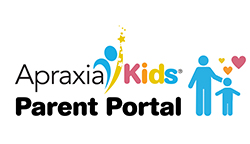While you’re planning for your next IEP meeting, it’s also helpful to think of some of things you do to accommodate or help your child at home and how those things might be implemented in a classroom setting. Write your own list of accommodations you’d like to have included in your child’s IEP. They may not all be included, but it’s very helpful to have your own list before these meetings start!
IEP stands for Individualized Education Plan, which means that IEP accommodations are very personal and specific to each individual child. Your school should be formulating your kiddo’s IEP based on their specific needs as shown by evaluations, SLP and teacher reports, your observations, and more.
Accommodations are also different from IEP goals (or Measurable Annual Goals/MAGs). The IEP goals will be very specific based on evaluations and proposed outcomes. Accommodations are more open to family and outside input based on your knowledge of what works, and what doesn’t work, for your apraxia star. Here are some of the IEP accommodations other parents have used in their apraxia stars’ IEPs as a helpful point of reference!
- Include your child’s SLP in parent-teacher conferences, IEP meetings, trainings, etc.
- Reading assessments should be done with their SLP to help facilitate fluency and vocabulary.
- Tests given orally should be done with their SLP.
- Reading/Fluency assessments should not be timed.
- Don’t require child to read out loud in front of other students.
- Added time for test taking.
- Notes from class should be written and provided to the student (by a peer or the teacher).
- Ability to type homework and other assignments if handwriting is a challenge.
- Small group testing where the teacher/para/SLP reads the questions/prompts aloud.
- Reading out loud for the child or have access to audiobooks until reading skills improve.
- Teacher will call on student only when hand is raised, rather than putting them on the spot.
- Allow use of adaptability equipment such as pencil grips, fidget tools, graphic organizers, picture prompts (to be used in conjunction with oral prompts), manipulatives for math, etc.
- Break larger assignments and tasks into smaller chunks so they’re easier to focus on.
- Allow for movement breaks to stimulate gross motor skills.
- No point deductions for mispronounced words during oral presentations.
- Priority seating near the teacher to lessen the amount of times the student may need to repeat themselves when speaking to the teacher.
